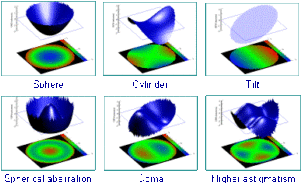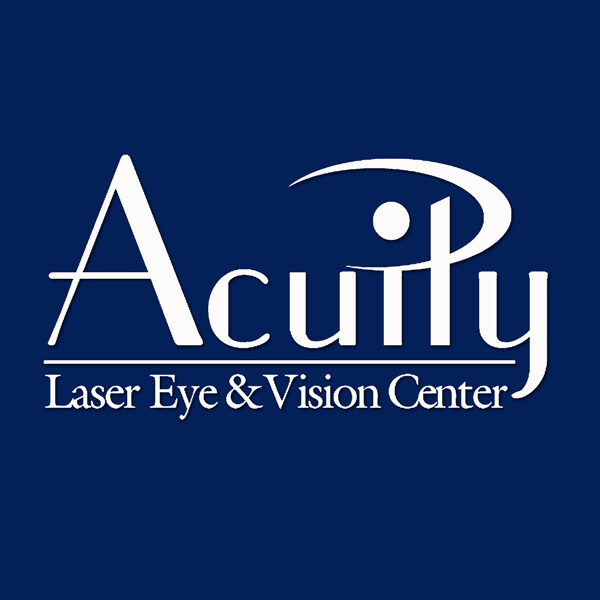
Clinical Study Results
Some of the early trial results, such as the 2003 VISX multi-center clinical study, that led to FDA approval for wavefront-guided laser vision correction showed the following:
• At one year after the Custom procedure:
• 100% of the clinical study participants could pass a driving test without glasses or contacts
• 98% of the clinical study participants could see 20/20 or better without glasses or contacts
• 70% of the clinical study participants could see 20/16 or better without glasses or contacts
• Four times as many clinical study participants were very satisfied with their night vision after the VISX CustomVue procedure compared to their night vision before with glasses or contacts.
What Is Wave Front Mapping?
Wavefront mapping is the technology that makes custom laser eye surgery possible by precisely measuring and diagraming the imperfections of an optical system, such as the eye. These imperfections are divided into lower-order aberrations, such as myopia, hyperopia, and astigmatism, and higher-order aberrations that affect night vision. Wavefront-guided technology is used in CustomVue laser eye surgery to correct refractive error and to improve night vision.
Wavefront Analysis and Mapping:
Wavefront analyzers are used to map aberrations in the eye. Several types of visual imperfections, referred to as lower and higher-order aberrations, exist within the eye and can affect both visual acuity and the quality of vision. Prior to wavefront technology, only lower-order aberrations such as myopia, hyperopia, and astigmatism could be measured and treated. However, these do not account for all potential vision imperfections. Higher-order aberrations can also have a significant impact on quality of vision and are often linked to glare and halos that may cause night vision problems.
Wavefront analyzers use a Hartmann-Shack sensor, which maps both lower and higher-order aberrations by projecting waves of light into a patient’s eye and mapping the waves that bounce back through the pupil. A perfect wavefront would be completely flat. When light rays enter the eye and traverse the different refractive indices, the wavefront surface changes, taking on a  shape unique to that eye. These variations are called wavefront aberrations. The aberration data is collected and then converted into a treatment formula by using Zernike polynomials, which are also called modes. Each mode describes a certain three-dimensional surface and the Zernike polynomials correspond with ocular aberrations. For instance, second-order Zernike polynomials represent the conventional aberrations such as defocus and astigmatism. Zernike polynomials above the second order represent the higher-order aberrations that are suspected of causing night glare and halos. Zernike polynomials help to simplify the wavefront technology by combining all aberrations into one simple map. This is called Zernike decomposition.
shape unique to that eye. These variations are called wavefront aberrations. The aberration data is collected and then converted into a treatment formula by using Zernike polynomials, which are also called modes. Each mode describes a certain three-dimensional surface and the Zernike polynomials correspond with ocular aberrations. For instance, second-order Zernike polynomials represent the conventional aberrations such as defocus and astigmatism. Zernike polynomials above the second order represent the higher-order aberrations that are suspected of causing night glare and halos. Zernike polynomials help to simplify the wavefront technology by combining all aberrations into one simple map. This is called Zernike decomposition.
History of Wavefront Technology:
Wavefront technology was originally developed for use in astronomy. In the 1900s, an astrophysicist named Johannes Hartmann devised a method of measuring the ray aberrations of mirrors and lenses. The Hartmann test used a metal disk in which regularly spaced holes had been drilled. The disk or screen was then placed over the mirror that was to be tested and a photographic plate was placed near the focus of the mirror. When exposed to light, a perfect mirror will produce an image of regularly spaced dots. If the mirror does not produce regularly spaced dots, the irregularities, or aberrations, of the mirror can be determined.
mirror will produce an image of regularly spaced dots. If the mirror does not produce regularly spaced dots, the irregularities, or aberrations, of the mirror can be determined.
In the 1970s, Dr. Roland Shack and Dr. Ben Platt advanced the concept by replacing the screen with a sensor based on an array of tiny lenslets, thus creating the Hartmann-Shack sensor. In 1978, Dr. Josef Bille of Germany was the first person to use the Hartmann-Shack sensor in ophthalmology. Other wavefront pioneers include Dr. Junzhong Liang and Dr. David Williams who developed a wavefront device that could be used in a clinical setting.
In 1997, Drs. Liang and Williams presented a paper at the Association for Research in Vision and Ophthalmology that discussed the early clinical results attained with the wavefront device. At this time, ophthalmologists and major laser manufacturers, such as VISX, Bausch & Lomb, and Alcon, began to look at the possibilities of wavefront technology for correcting refractive error and to develop their own wavefront analyzers. In 2002, the FDA approved the first wavefront-guided custom LASIK application. Today, there are many integrated wavefront-guided LASIK systems that first generate a wavefront map of a patient’s unique optical imperfections, then send this information to an excimer laser that performs the custom LASIK procedure.
Zernike Polynomials Shapes
The wavefront analyzer software condenses the wavefront information into a conventional refraction in diopters as well as in Zernike form. This map is then transferred to the laser, enabling treatment of the patient’s lower and higher order aberrations.



Comments are closed